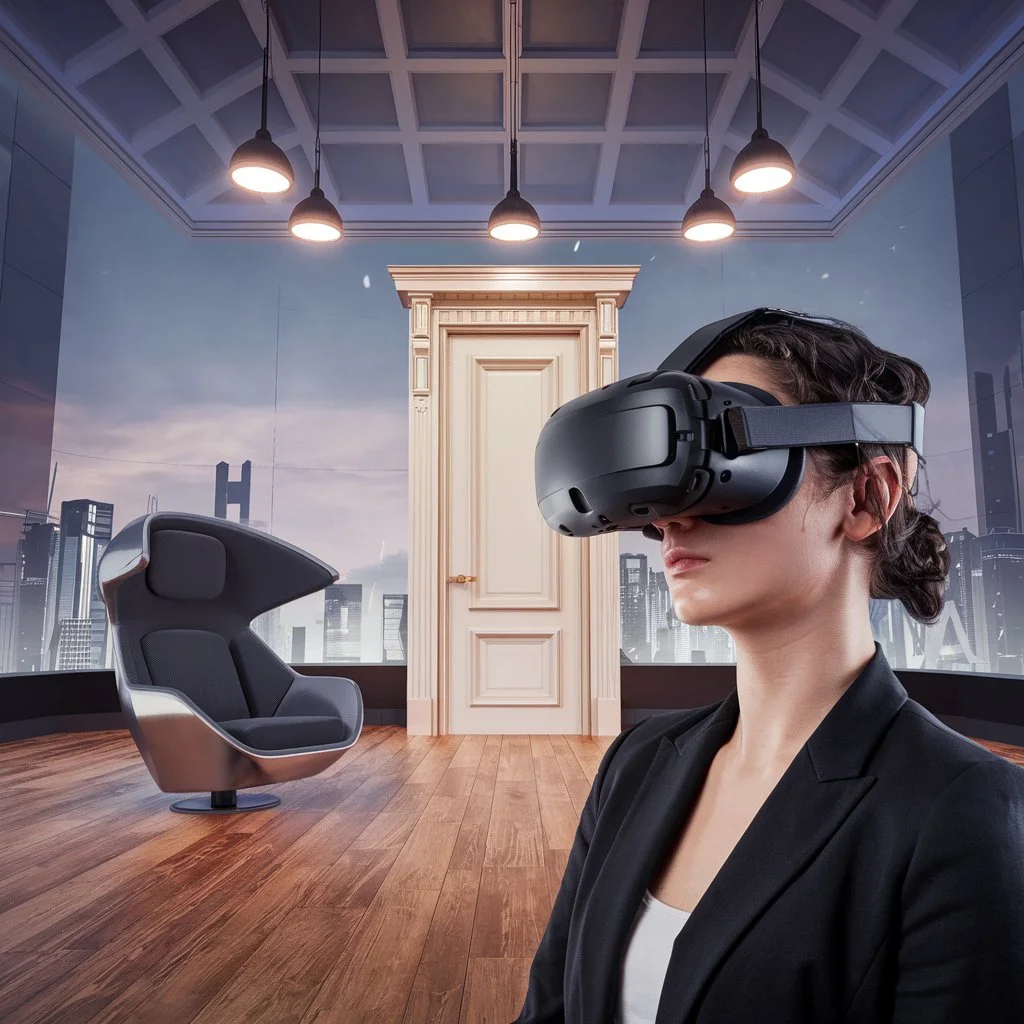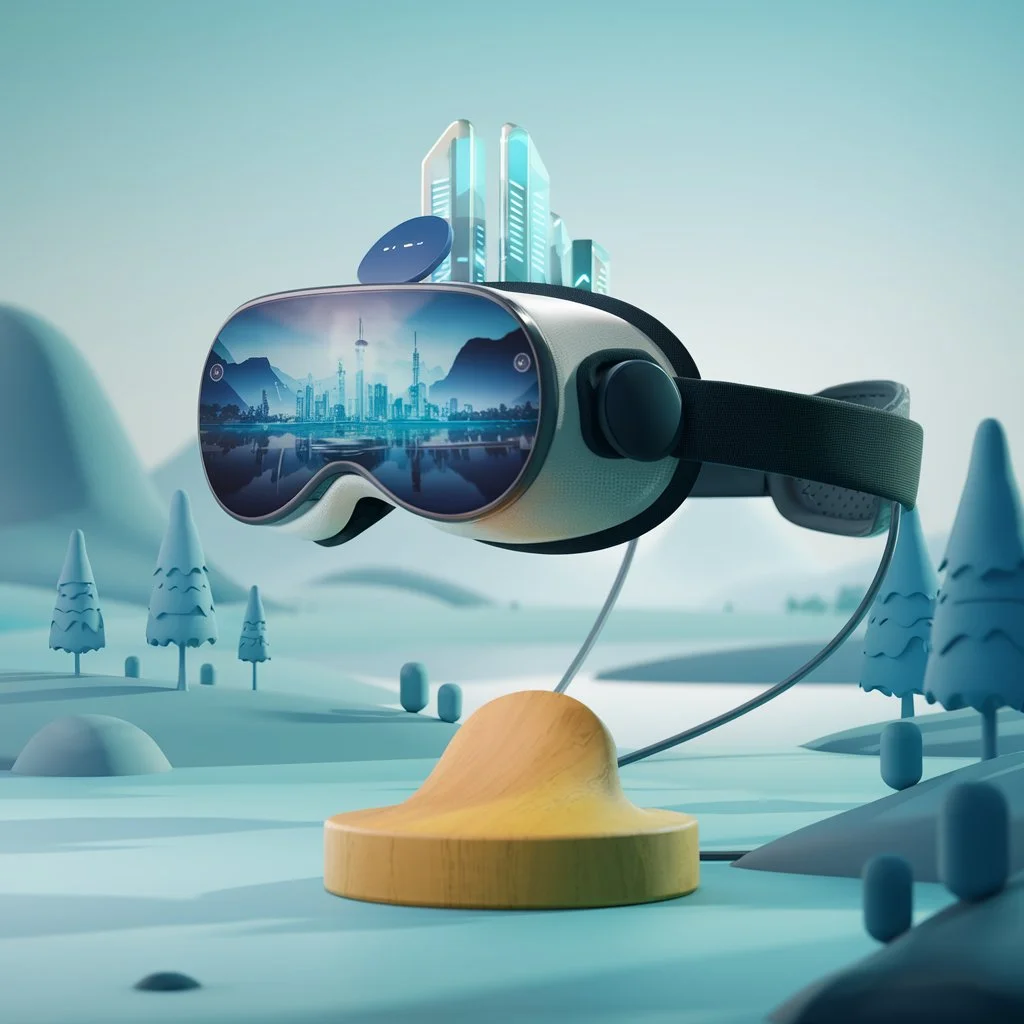The scope of virtual reality has moved from gaming to the education sector. This has given learners an option to understand more and develop new ways
The scope of virtual reality has moved from gaming to the education sector. This has given learners an option to understand more and develop new ways of learning. In this article, we will discuss how classrooms are being transformed by VR to make learning interesting and enjoyable for students.

Introduction to VR in Education
Virtual Reality is like entering a different dimension altogether. It gives students the chance to participate in places and do things that they would never get access to physically. Education becomes a fun thing with virtual reality. This technology is now used in schools as it makes teaching interactive and meaningful.
What is Virtual Reality (VR)?
VR is a computer-generated environment that can be felt by users as if it is real life where you can come into contact with different objects just like you were there when you put on special goggles but at the same time remain in their physical locations. For example, through VR, learners can take virtual trips or visit the inner body parts and even go back to history.
Evolution of VR in Educational Settings
At first, virtual reality was primarily developed for video games; however, later due to its technological advancements educators identified its usefulness as a teaching tool today many schools are adopting this gadget. From basic 3D models to complete immersion experiences, VR has come far in simplifying complex subjects for learners.
Benefits of Virtual Reality in Education
VR incorporation into learning systems offers many advantages; both teachers and students gain significantly from this approach. It makes learning easier because one gets to see actions occurring hence getting hold of difficult concepts easily. Some key benefits include:
Enhancing Student Engagement
One significant merit that comes with integrating virtual reality into academics is that it maintains student attention on their studies rather than diverting their thoughts elsewhere during lessons since sometimes conventional lessons may become wearisome while using a VR- -e-learning program turns studying into fun activities that every student wants. Engaged students will always remember what was taught. Hence, even the most difficult topics can be made interesting.
Immersive Learning Experiences
VR provides students with immersive learning experiences. Instead of reading about history, for example, they can visit ancient civilizations and see how people lived back then. In a science class, for instance, they might explore distant planets or speak another language in a virtual marketplace. These experiences help students to understand and remember information better.
Personalized Learning Opportunities
Each student learns differently and at his/her own pace; thus VR allows for personalized learning experiences where learners are enabled to move through lessons at their speed. They can repeat an experience if they do not understand it well enough hence making learning more effective while reducing frustration levels as well.
Safe and Controlled Environments for Practice
Some subjects like medicine or engineering require practical handling which may be risky in real life. VR provides an environment that is safe enough for students to practice these skills in it. For example, medical students could perform virtual surgeries without any risks involved and engineering learners could put up structures within such environments too. This way, learners get hands-on experience and build confidence without fear.
Virtual Reality in Different Educational Fields
The use of virtual reality has extended into different areas within education today; it is changing the way that people learn across various subjects. Let us look at how VR is being applied in some specific subjects below:
Virtual Reality and Medical Training
In medical training, the importance of VR cannot be overemphasized. It allows students to practice surgeries and other procedures in a virtual environment. They can visually penetrate the human body and understand how different parts function together. This practical experience is essential for future doctors and nurses.
Virtual Reality and Engineering/Architecture
VR is beneficial for engineering as well as architecture scholars who want to design models of buildings, bridges, etc. Walking through their designs helps them identify any impending problems before actual construction takes place.
Using Virtual Reality in History and Geography Lessons
With VR, history, and geography come alive. Students can go back in time and see historical events or visit any spot on earth like countries or monuments among others. This makes studying these subjects more interesting and memorable.
Learning Languages with VR
VR makes learning new languages less difficult. Students can speak the language they are learning in a simulated environment that resembles real-life situations. One such example is having virtual customers who have lunch in a virtual café ordering food in your target language which is one way of ensuring you increase confidence towards speaking skills.

The Challenges of Incorporating Virtual Reality into Education
But along with all these advantages are some challenges facing it which should be addressed if schools are to effectively bring in this technology into classrooms. Below are some of the major obstacles that hinder the use of VR in educational settings.
High Expense versus Affordability
The costliest part about having VR at school is the investment required when purchasing its equipment which includes computers among others but again headsets could also be costly and thus not affordable by many school owners hence limited access by learners concerning this technology at large since not every learner has access to it while at home making a gap between those who have access to it and those who do not.
Compatibility Issues And Technical Limitations
Additionally, there might arise technical-related issues when using VR equipment during studies within classrooms since the equipment may not function as expected or it could be incompatible with other gadgets in the class. Therefore, these challenges interrupt the teaching process and make teachers unable to rely on VR.
Technology Resistance
Some educators, as well as parents, are hesitant about introducing technologies like virtual reality into education. They may fear that it would supplant traditional means of instruction or they might question its effectiveness in teaching. To change this perception, teachers need access to training and education that show them how beneficial VR is.
Teachers Need More Training
For teachers to use VR effectively in their classroom settings, they must have specific training for this purpose. Without this knowledge, a teacher may fail to integrate VR into instruction or solve any technical problems arising from it. Consequently, imparting such skills to educators becomes pivotal in successful VR application at schools.
What’s Next For Virtual Reality In Education?
As technology continues developing so will the use of virtual reality within the education domain. The future offers endless possibilities for how VR can enhance learning further. Here are some of the trends that will probably dominate the educational use of VR going forward.
Artificial Intelligence and its integration
Going forward, virtual reality may be merged with artificial intelligence to have the personalized learning experience go a step further. For instance, AI can analyze how well a learner is doing in class, and use this information to personalize VR course materials for them. This blending of technologies has the potential to transform education by making it more productive and different for each student.
Virtual Classrooms Versus Remote Learning
Virtual classrooms are becoming increasingly popular due to the rise of online learning. For example, VR makes it possible for a class environment where students can talk with their teachers as if they were together even when they are far apart. The remote learning process would become an interesting and effective one through this method.
Collaborative Learning and VR
VR can also support collective learning. Notably, students even from different geographical locations can take part in projects within a virtual setting that fosters togetherness and enables them to share their ideas in a new fashion.
VR for Special Education
VR is an essential tool for special education. It provides tailored learning experiences for various students’ needs. For instance, VR assists autistic pupils to improve on social interaction within controlled spaces away from society’s stigma. This enhances their self-assurance while acquiring important life skills at the same time.
Case Studies: Successful Implementation of VR in Schools
Several schools have integrated VR into classrooms successfully, hence offering useful information about its advantages. Several case studies demonstrate how VR has been effectively used in education.
VR in STEM Education
In STEM (Science, Technology, Engineering, and Mathematics) education, virtual reality helps students comprehend intricate concepts better. They can explore the solar system or engage in virtual chemistry experiments among other things. These interactions make studying more enjoyable and comprehensible.
VR in Vocational Training
Vocational training uses tools like Virtual Reality (VR) to provide real-life experience on how to perform hands-on tasks such as automotive repair, welding, or electricity handling among others. The trainees may simulate some practices before applying them practically thus avoiding accidents through mistakes made during the training process hence saving lives.
VR for Educational Field Trips
Virtual field trips are being organized by some schools whereby they take their learners to places that are impossible to physically reach. Students can visit such places as Egypt’s Pyramids, the Great Barrier Reef, or any museum located at another end of the planet via their computers. Such kind of trips broadens horizons and makes learning more fascinating.
Conclusion
Virtual reality is transforming education by making it interactive and engaging which makes it easier for students to learn. Therefore; though there exist challenges related to its implementation; its contribution to the education sector cannot be underestimated. As technology continues to advance, VR is likely to play an even bigger role in classrooms, providing students with new ways to explore, learn, and grow. We can make learning more personal and immersive for all our students by incorporating virtual reality into education.

COMMENTS